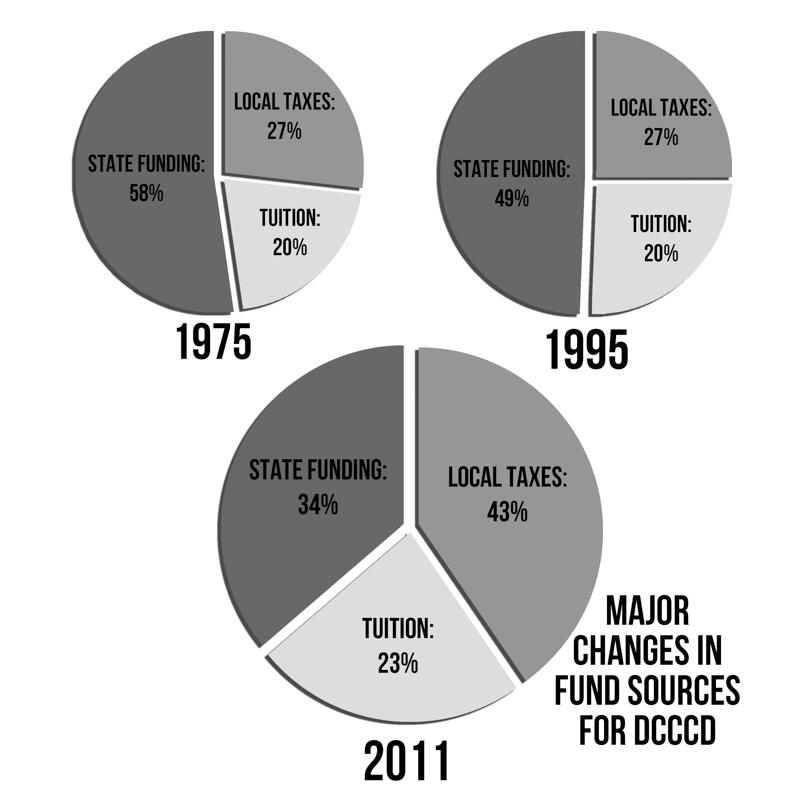By Nicholas Bostick
New Media Editor

Beginning Oct. 1, the start of fiscal year 2014, the Texas legislature will implement a new funding formula for state colleges.
The formula will bring an outcome-based approach to state funding. Two-year colleges will focus on “Momentum Points,” which are defined as “specific measures of student success and persistence,” according to the recommendations put forth by the Texas Higher Education Coordinating Board.
The measures outlined by THECB include students completing developmental courses, graduating with an associate degree, transferring to a four-year university, completing first-year college math and English courses, and completing 15 and 30 credit hours.
The average of these momentum points over a three year period will determine the final allocation of 10 percent of total annual state funding at the end of the three years, according to the THECB’s recommendations.
In 2011, state appropriations accounted for $16.4 million, or 27 percent, of Brookhaven College’s total budget, according to the 2011-12 Brookhaven Fact Book. Under the new formula, $1.6 million would be withheld, along with 10 percent of the next two years’ budgets. Based on Brookhaven’s momentum points, a portion or all of the withheld funds will be allocated to the school.
This new formula is a major overhaul of the funding procedures for Texas colleges. The previous formula granted state funding to Brookhaven based on the total number of contact hours students were enrolled in by the census date, Michael Dennehy, Associate Vice-President of Planning, Research and Institutional Effectiveness, said.
“There are three primary revenue streams to fund the college: state funding, tuition, local property taxes,” Brookhaven President Thom Chesney said. “The state portion has decreased significantly for several years.” Local property taxes and tuition accounted for 34.6 percent and 18 percent respectively in 2011 according to the Fact Book.
This new outcome-based approach will require Brookhaven to address issues with retention and graduation rates. The one year retention rate for full-time students taking their first semester in college was 54 percent in 2010. The graduation rate for three-year full-time students in 2008 was six percent. This means that out of 432 full-time students taking their first semester in 2008, 26 students graduated by 2011.
“We’ve had years and years and years where a lot of students didn’t finish degrees,” Dennehy said. “They didn’t think it was important, or maybe we didn’t encourage them.”
Dennehy also said students should be more cognizant of how many classes they are taking. “We’re trying to make students stop and think before they drop a class.”
Brookhaven has begun implementing initiatives to increase retention and graduation rates. Strategies like “From Day One,” a mandatory presentation of tips given by Brookhaven faculty, have already begun to instill habits geared toward collegiate success in Brookhaven students.
On July 16, Chesney delivered a presentation at the Board of Trustees Planning & Budget Committee meeting. Other plans that were proposed at this meeting included an early warning system to open the lines of communication between students at risk of failing a course and Brookhaven faculty.
How these new changes to state funding will affect Brookhaven is still unknown. There is a proposed marketing campaign to attract more students to popular career and transfer programs offered at Brookhaven.
“We are also working diligently to respond to one of the most frequent concerns students send to me,” Chesney said, “offering the courses they need on the days, times and delivery format they prefer, so they do not turn elsewhere for them.”















